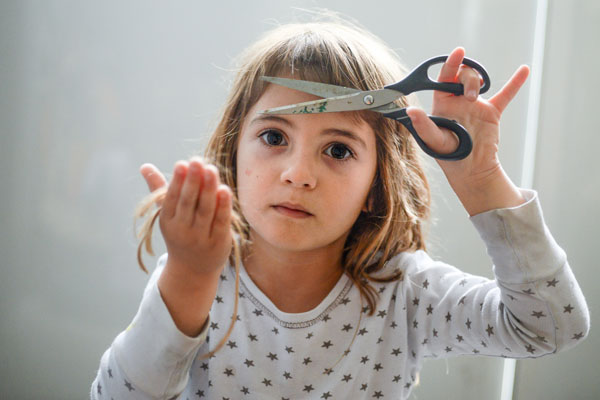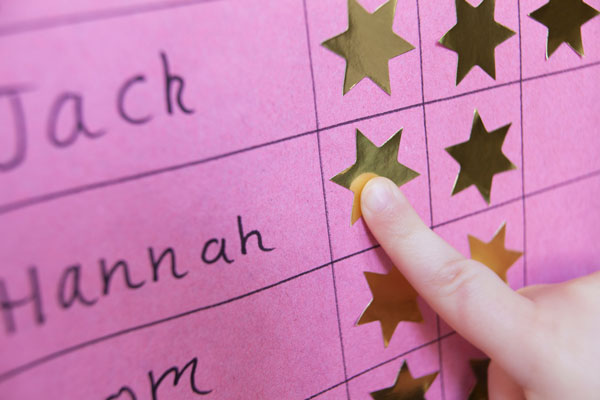Setting Age-Appropriate Consequences to Discipline Your Kids

Disciplining children is a delicate balance of teaching right from wrong and guiding them toward making better choices, all while ensuring the love and support that nurture their growth remains clear. Setting age-appropriate consequences plays a pivotal role in this process. It's not just about correcting behavior; it's about educating and helping children develop the internal discipline they need to manage themselves and their emotions effectively.
Setting discipline for children is never fun for you, or your child. There are so many questions surrounding the topic of discipline, such as: At what age should you start taking away technology? Or at what age is time-out no longer effective? Experts chime in.
Stress the Consequences of Their Actions

“I emphasize the use of consequences over punishment,” says Kristen Arquette, a licensed marriage and family therapist in Bellevue, WA. “They’re related concepts but with a different purpose."[1]
According to Arquette, consequences help kids to learn from mistakes, choose better behaviors, and get along in the world.
Punishments make children feel bad, or worse yet, suffer. “While punishments may ‘work,’ to interrupt a behavior short term, they have potentially negative long-term effects including causing children to feel bad about who they are (which also makes them more likely to act out again), as well as creating an adversarial relationship between parents and child.”
Consequences can be positive or negative, and there are two types: natural consequences, which occur as a direct result of the child’s behavior, says Arquette, and logical consequences, which are those imposed by caregivers because of the child’s behavior. “For example, if a child kicks a hole in the wall, the natural consequence may be that their toe hurts, whereas the logical consequence may be that they lose an afternoon of playtime and have to help their parent repair the drywall.”
Choosing Their Consequences

Part of an adult’s job is to help children face the consequences of their behavior, explains Arquette. “I tell the kids who come to see me that THEY choose their consequences by their behavior. For example, if they refuse to clean up the toys at the end of the session, the next time they come they won’t be able to use those toys. They can ensure using the toys again by putting them away when I ask.”
Also, natural consequences work best to promote learning. Arquette elaborates: “If the natural consequences get the child’s attention and generate insight and remorse, there is no need to add logical consequences.” Logical consequences work best when they’re consistent, firm, logical, and fair; wait until you are calm to impose consequences in order to avoid overreacting and avoid power struggles.
Examples of Age-Appropriate Consequences for Kids

Determining age-appropriate consequences is essential to good parenting and proper discipline. Depending on how old your child is, the consequences of their actions will be different. Let's take a closer look at age-by-age discipline.
Consequences for Infants
Consequences or punishments are not appropriate for infants, notes Arquette. Because babies are not yet able to understand the connection between actions and consequences, trying to employ any type of strict discipline is unlikely to be effective and might even do more harm than good.
Consequences for Toddlers (3 years)
Change the tone of your voice (a loud, deep “no” is usually enough); redirect them towards another activity/toy/etc, or give a time-out (the number of minutes should be equal to the child’s age). “Put them in a location away from everyone and everything else going on; however, if they won’t stay in that spot, just ignore them and don’t worry—the most important aspect of a timeout is breaking the cycle of the behavior, not where they spend it,” says Arquette. “Offering choices can help avoid many behavioral problems—try giving two options that are equally acceptable to you (for example, “Do you want to put on your coat first, or your shoes?”).”
Consequences for Preschoolers (4-5 years)
Use the same consequences you did in their toddler years, says Arquette, in addition to taking away toys or privileges for a short time. “For example, if your child is fighting over a toy, then put the toy in timeout for 20 minutes. Invoke the consequence as soon as possible after the misbehavior; if too much time passes between the behavior and the consequence, kids at this age won’t make the connection.” Counting (from 3-10) is also effective with kids this age to get them to do or stop doing things.
Consequences for School-Age Kids and Tweens (6-12)
Use the consequences you did for younger kids, although you will likely have to extend the length of time for continued effectiveness. Says Arquette: “The loss of privileges or items are more effective when they’re something your child really values. For older kids, losing time with friends or electronics can be powerful motivators.”
Whenever possible, let natural consequences play out—if your child refuses to eat their dinner, let them experience the long wait until breakfast. “Expression of disappointment or disapproval of a parent also can serve as a consequence.”
Consequences for Teens (13-18)
According to Arquette, ask yourself: “What matters the most to your teen? Those privileges or special items will be the most impactful to lose.” For example, if your child uses their cellphone after bedtime, they might lose it for the next day.
Try to talk things out afterward to get to the root of the problem, explains Arquette, and help your child understand how thoughts and feelings connect with behavior. “Teens can often be relied upon to give input on house rules and what should happen if they’re violated. Giving them a voice may help in maintaining their cooperation down the line.”
Focus On the Good

It’s so easy to ‘steam’ when you’re frustrated with your child. However, warns Arquette, parents can inadvertently reinforce poor behavior choices in children of all ages, by paying too much attention to it. “Try instead to catch your child doing good behaviors before the bad behavior has a chance to start.” Thus, reinforce good behaviors with specific praise, such as “It’s so helpful when you make your bed without a reminder, now we have more time to play.”
Be careful not to taint the praise, stresses Arquette, which is when good behavior is highlighted, but a negative remark is added and takes away the good feeling typically fostered by praise, such as “It’s so helpful when you make your bed without a reminder, I don’t understand why you can’t do this every day.”
Rewarding Positive Behaviors

Offering small rewards for the behaviors you want to see helps children develop internal motivation so that eventually they do the behaviors on their own, says Arquette. “As positive reinforcement, you can keep a token board, sticker board, and have a three to 18-year-old earn a reward,” suggests Traci Colangelo, a contract behavior specialist, and family trainer based in Long Island, NY. “It may sound silly for an older child, but you can keep a goal chart instead of a token board, and perhaps when three goals are achieved, they can earn.”
Adds Colangelo: “Always, though you must first decide the outcome you want to see and make it relevant. If you want that 18-year-old to come home at a certain time then keep a chart of three out of five nights if it’s achieved, then they get the car the next evening. If your three-year-old is throwing things, then keep a token board and a visual of what she is earning. Every two minutes of ‘no throws’ they get a token, and say they reach the five tokens max, they earn their reward.”
The Right Consequences for Kids
By tailoring consequences to fit a child's age and developmental stage, parents and caregivers can ensure that discipline is both effective and educative. It's about creating an environment where kids can learn from their mistakes, understand the importance of good behavior, and develop into well-rounded individuals. Remember, the goal of discipline is not to punish, but to guide children towards making better choices in the future. With patience, consistency, and love, setting age-appropriate consequences can be a powerful tool in a child's development.
Does your sensitive child have a difficult time dealing with discipline? Here are 4 Discipline Strategies to Use with Highly Sensitive Kids.

